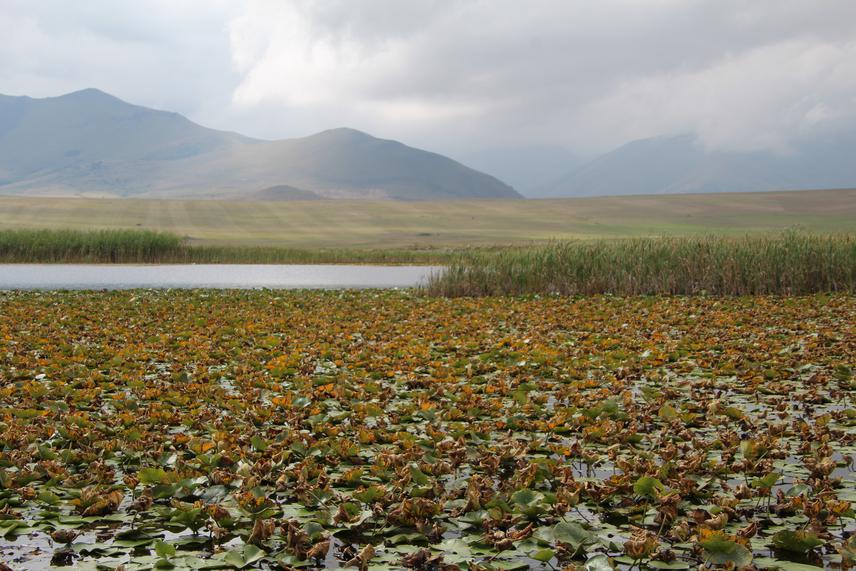Dmitrii Sadokov
Project includes obtaining and updating data about fragile ecosystems of the Lori lakes system (northern Armenia) and justification of its conservation importance. Lori lakes are included into Emerald Network (Bern Convention on the Conservation of the European Wildlife and Natural Habitats) as an Area of Special Conservation Interest. The key task is to characterize and maintain the existing level of biodiversity for the valley, which is extremely important for the wildlife of the surrounding mountainous terrain. Numerous lakes and wetlands create increasingly favorable conditions for plants and animals. We intend to conduct an inventory research of birds, plants, fish, insects, mollusks, reptiles and amphibia species in the area along with landscape and hydrological study, which will help to estimate the level of the ecological sustainability.
New conservation measures are planned to be suggested after the comprehensive study of natural (hydrological, landscape, biological) and artificial (pollution) processes in the area.

Lake.
The project is aimed at comprehensive research and methodical elaboration of conservation measures for the Lori lakes system – approximately 15-20 lakes. The lakes are located in an intermountain basin surrounded by ridges 600-800 meters higher than the valley surface. Mountain-steppe landscapes with numerous lakes provide habitats for many flora and fauna species which remain still poorly investigated.
Key objectives of the work include discovering and monitoring of rare and widespread species with subsequent estimation of their population’s status, spatial distribution. All species observations will be analysed and corresponding lists are to be compiled in order to justify vulnerability and conservation value of the plateau. Hydrological conditions of the lakes and landscape structure of the surroundings will be studied in order to investigate the ecological peculiarities, i.e. to correspond spatial distribution of the discovered specimen to certain factors of the environment.
A range of methods is planned to be applied in course of the research, where each method is designated both for fundamental and applied (conservation) purposes. Methods include inventory work (ornithological, herpetological, ichthyological, entomological) and surveys (hydrological, hydrochemical, landscape, geobotanical, geoecological) which are expected to be mutually complementing. The fieldwork will be conducted jointly by specialists from Russia (Darwin Nature Biosphere Reserve, St. Petersburg University, Arctic and Antarctic Research Institute) and Armenia (Insitute of Botany NAS RA, Institute of Zoology NAS RA, Armenian Pedagogical University).
All the information obtained during the project is supposed to be used to evaluate ecosystems sustainability and perspective for special conservation measures to be imposed. Lori Lakes site is included into Emerald Network list (Bern Convention), and also State Program on Conservation and Management of Protected Areas of Armenia outlines relevance of creating a protected area at the Lori plateau. We expect the project results to contribute into the strategy of nature conservation in Northern Armenia, in a row with several national and international programmes that have been deployed recently across the country.